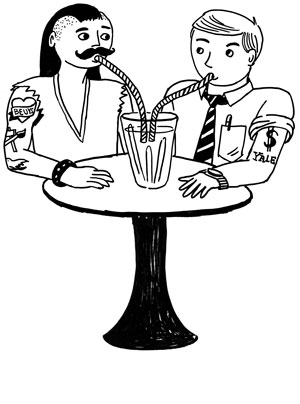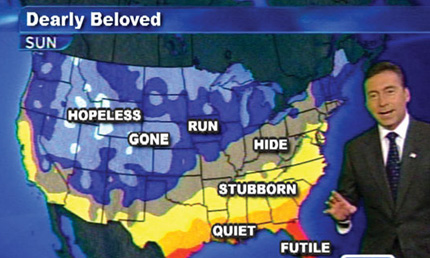By Anne Weber
 More than 100 SAIC community members crowded the Columbus Auditorium one early December afternoon to witness a panel of arts leaders discuss their respective successes. During the course of the event, SAIC President Wellington Reiter facilitated conversations with Kelly Costello, director of design research at Doblin, Inc.; Mark Dziersk, vice president of design Brandimage-Desgrippes & Laga; and Theaster Gates, an entrepreneur and the coordinator of arts programming at the University of Chicago, which covered a range of topics facing artists today.
More than 100 SAIC community members crowded the Columbus Auditorium one early December afternoon to witness a panel of arts leaders discuss their respective successes. During the course of the event, SAIC President Wellington Reiter facilitated conversations with Kelly Costello, director of design research at Doblin, Inc.; Mark Dziersk, vice president of design Brandimage-Desgrippes & Laga; and Theaster Gates, an entrepreneur and the coordinator of arts programming at the University of Chicago, which covered a range of topics facing artists today.
The panel shared their strategies for working in the new economy with an SAIC education. The consensus among panel members was that passion, good communication skills and the ability to value humanity over technology, were critical to success in the world beyond school. The panelists also agreed that being critical of culture is essential to being an artist and the Master of Fine Arts degree (MFA) was touted as the new Master of Business Administration (MBA), in terms of creative problem solving.
“An MFA helps us understand the full breadth of problems in the world,” said Gates, who recently converted a Prairie Avenue bookstore into a small public library on the south side of Chicago. He went on to explain his belief that “Artists have a willingness to grapple with whatever the problems are in the world. Traditional life is a marginal way of looking at problems, as opposed to what a career in the arts could look like.” He also urged artists to maintain a practice that is “wholly creative,” much like scientists.
Reiter said that he considers the new economy a powerful place for artists because artworks are problem-solving opportunities. But he also pointed out some of the challenges. “Audiences for the fine arts are diminishing, in competition with many other things looking to use your time,” he said. Reiter emphasized that this age will be noted for the velocity of change and suggested the book, Accelerated Disruption, Understanding the True Speed of Innovation by Erik Lefkofsky, as a way to explore these changes further.
Reiter also stated that an MFA prepares students to ask and respond to questions. “As artists we can do whatever we want,” he said. “We could be the great translators or communicators. An artist’s goal can be to help people deal with change.”
Designer Dziersk noted that everything his company does now is global. “In design, the elements that work best are those that are universal, not tied to local customs or ways of relating to products,” he said. “95 percent of why we buy something is motivated by unconscious thoughts. MFAs can tap into that.”
Panel members also stressed that the ability to think creatively and broadly, allows for re-framing problems to allow new insights into solutions. “Being able to re-frame a problem in this way brings more value to the table,” said Costello. She encouraged art students to “tell me the challenge and why you approached it in a unique way.” She thought George Lucas and Michael Graves were examples of creative leaders. She said, “Think like that. Don’t conform, show passion around your work, what used to get repressed is now celebrated.”







What Duke Reiter says is meaningless to me. His record as ASU was shoddy. Just do a FOIA request and see his performance reviews. He was not the search committee’s first or second choice. Crow stepped in to hire him. My neighbor was on the committee and told me one morning as I walked my dogs.
Duke relished in ruining people’s lives. He is mean spirited and cruel at heart. Behind that smiling man is a bully.